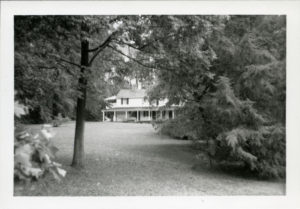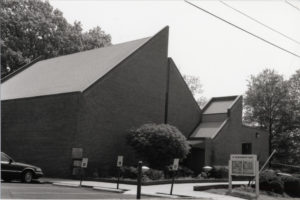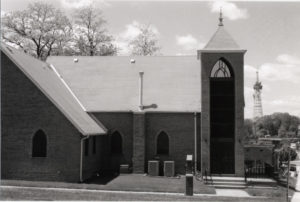This year marks the 150th anniversary of the notable Hall’s Hill/High View Park neighborhood in north Arlington.

Bazil Hall home, 1700 N. George Mason Dr., c. 1866
The name Hall’s Hill comes from Bazil Hall, an Alexandria (now Arlington) County farm owner in antebellum Northern Virginia. Following the difficult Civil War years, Hall gradually broke up and sold his estate, including its noted rise, in small parcels to freed slaves, generally for $10-15 per acre.
Hall, according to a 1969 interview with Robert Nickerson, urged blacks to buy as much land as they could, saying a time would come when they would no longer be allowed to acquire such property. In Nickerson’s words: “[H]e told the truth.” In the 1890s, before enforced segregation kicked in, the lots were also advertised in the Washington Bee, the region’s black newspaper.
In the early days of the Hall’s Hill community, most residents had gardens and often raised chickens and hogs. In oral histories, they fondly described a life built around church, community and social activities. Block parties, sledding and the neighborhood baseball team, known as the Virginia White Sox, were just some of the pastimes.
“The Hill” is remembered as a place where you knew everyone and everyone knew you, and children understood that if they misbehaved in front of neighbors, their parents would soon hear of it. A close-knit community, the people of Hall’s Hill looked out for one another.

Mount Salvation Baptist Church
Bounded by Lee Highway (north), Glebe Road (east), North 17th Street (south) and George Mason Drive (west), residents established many of their own stores, schools and houses of worship. The churches in particular remain an ongoing source for social, cultural and religious enrichment.
Until the 1950s the neighborhood was separated from the adjacent white community by an 8-foot-high fence that ran between the backyards of blacks and whites. Only a small part of the fence remains today. It can be seen from N. 17th Street.
Members of the community played significant roles in the national and local Civil Rights movement of the 1950s and 60s, working to desegregate public schools, housing, theaters, hospitals, libraries and eating facilities.

Calloway Methodist Church
Arlington County officially changed the neighborhood’s name to High View Park in 1965. However, many long-time residents still prefer to call the area by its original name.
Today an aging population and changing demographics place the community on the brink of significant change, but as long as the stories of residents are collected, preserved, and celebrated, its history and significant contributions will be not be lost.
From an oral history with Welbe “Peggy” Earline Deskins done in 2003:
“I think it’s always important to… remember your roots and to remember where you started from… the why and how of everything. I think that helps in your later life and it certainly helps other people as they’re coming along.
If you lose it all, [there] comes the time when there’s a whole race who just knows nothing…. You might have to even start out from the beginning, but when you do, if you have some references, then you know what to start with.
I think you should always… keep track of history… people were different in that time. People helped each other a lot more. People were a lot more open with each other, you know. I mean you could run next door and get a cup of sugar you know… it was just different. And those are the kinds of things I think that help people to keep going and to prosper.”